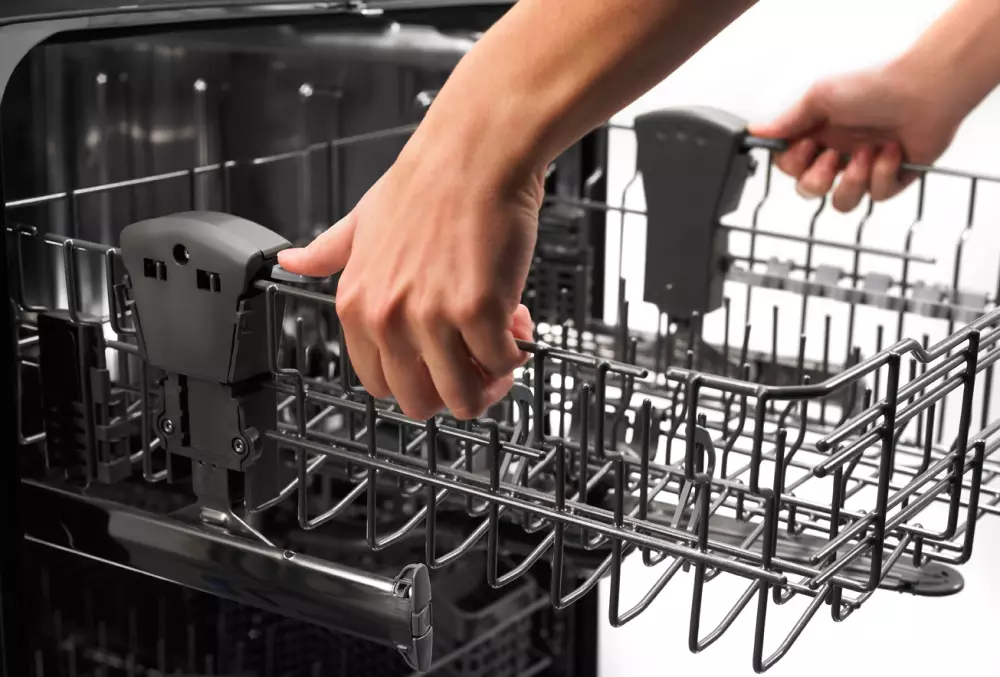How to Clean a Floor Rug: Quick and Easy Methods for Busy People
Floor rugs are popular for accenting hard surface floors or even wall-to-wall carpets. They enhance the appearance of a room by bringing together its components. However, they also have many other benefits, such as improving indoor air quality. To ensure their longevity, floor rugs must be cleaned and cared for properly.
If you find yourself pressed for time or prefer to have someone else take care of it, you might want to think about enlisting the services of a professional cleaning company in Melbourne to tidy up your home for you.
Floor rugs enhance the aesthetic appeal of a hard surface floor, such as tile, laminate, or hardwood. They not only improve the appearance of a room by bringing together the many colors utilized in the décor but also have other benefits, such as enhancing indoor air quality.
However, many people may need clarification on whether or not they should cover their floors with one. The answer is a resounding yes, but floor rugs must be cleaned and cared for correctly to ensure longevity and maintain appearance.
This blog post will provide you quick and easy methods for busy people on how to clean a floor rug. So, whether you have a large or small rug, a plush or flat one, we've got you covered.

What You'll Need
Instructions
How to wash your floor rug
If you have a small rug, washing it in a machine can be a quick and easy way to clean it. Use the cold, gentle cycle and let it air dry afterward. However, if your rug is too big for the washing machine, you must take a different approach.
Here's how to wash your floor rug on your own.
1. Vacuum all sides of your floor rug
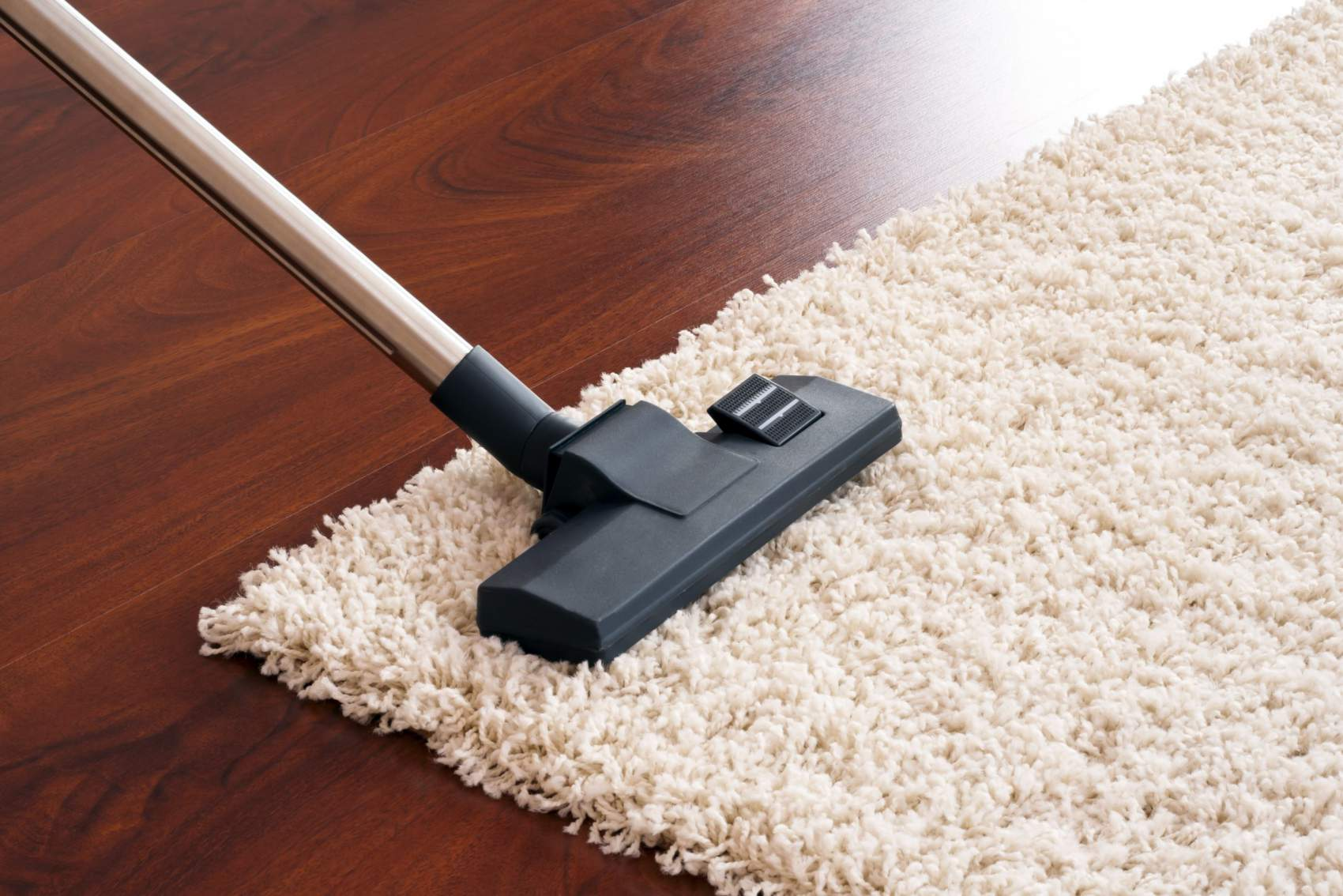
Start with a thorough vacuuming of both sides of the rug. The back of the rug also collects dust and dirt, so remember to flip it over and give it a good vacuuming.
2. Take the floor rug out
Take the rug outside and lay it out on a fence or porch railing. Use a broom to gently beat the rug's back to loosen any dirt or debris. Keep beating the rug until all the dirt clouds disappear. Be careful not to beat the rug too hard if the back is made of latex material to avoid damage.
3. Consult the label and rinse the floor rug
Please rinse the rug according to the care instructions on the label. If you don't have cleaning shampoo, use a bucket and a spoonful of mild liquid dish soap with warm water.
Always perform a small spot test on your area rugs first to ensure the solution won't cause the colors to run. Lay the carpet on a deck or tarp near a water source, like a garden hose. Soak a brush in soapy water, scrub the carpet thoroughly, then rinse with the hose.
If the colors bleed, take the rug to a professional cleaner. If not, you can move on to drying.
4. Air-dry completely

Remove as much moisture as possible from the area rug using a towel. Hang it up outside to dry in the fresh air on a clothesline.
Depending on the size of the rug, drying time can take up to 20 hours. If you can't leave it outside for that long, you can move the rug indoors to a laundry room, cellar, or garage to dry.
5. Re-vacuum the floor rug after drying
Once the rug is dry, put it back where it belongs and give it another thorough vacuuming. This will help remove any remaining dirt or debris that may have settled on the rug while drying.
Consider taking your rug to a professional cleaning service if it is too large or delicate to clean.
But with these steps, you can successfully wash your floor rug and keep it looking great for years.
How to take care of your floor rug

The best way to clean a rug depends on various factors, including its material, size, and construction. Generally, a wall-to-wall carpet necessitates less maintenance than a floor rug. However, with proper execution, the following cleaning tips can effectively clean most rugs.
1. Vacuum your floor rug to remove dirt and grit
Vacuuming your rug is one of the most effective ways to remove dirt and grit that could cause damage to your rug's material. When cleaning, remove any furniture or objects that might get in the way.
Use a vacuum cleaner with a beater bar or rotating brush to ensure that you get deep into the fibers. For reversible rugs, vacuum both sides to provide a thorough clean. However, avoid vacuuming any fringe as it could get caught in the machine and damaged.
2. Brush out pet hair from your rug
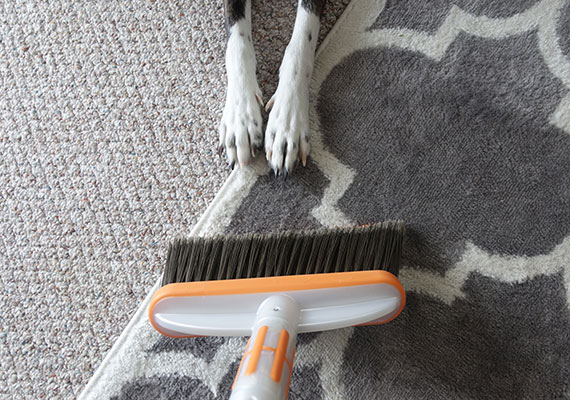
You will likely find pet hair stuck in your rug even after vacuuming if you have pets. To remove pet hair, use a soft-bristle brush and brush the rug's hair in the same direction. This process will help eliminate any hair the vacuum cleaner might have missed.
3. Flip your rug once or twice a year
Your floor rug will likely experience wear and tear due to foot traffic, sun exposure, and other factors. To ensure that your rug wears evenly, it is recommended that you flip it once or twice a year. This process will help evenly distribute the wear and tear, extending your rug's lifespan.
4. Shake your small floor rugs outside
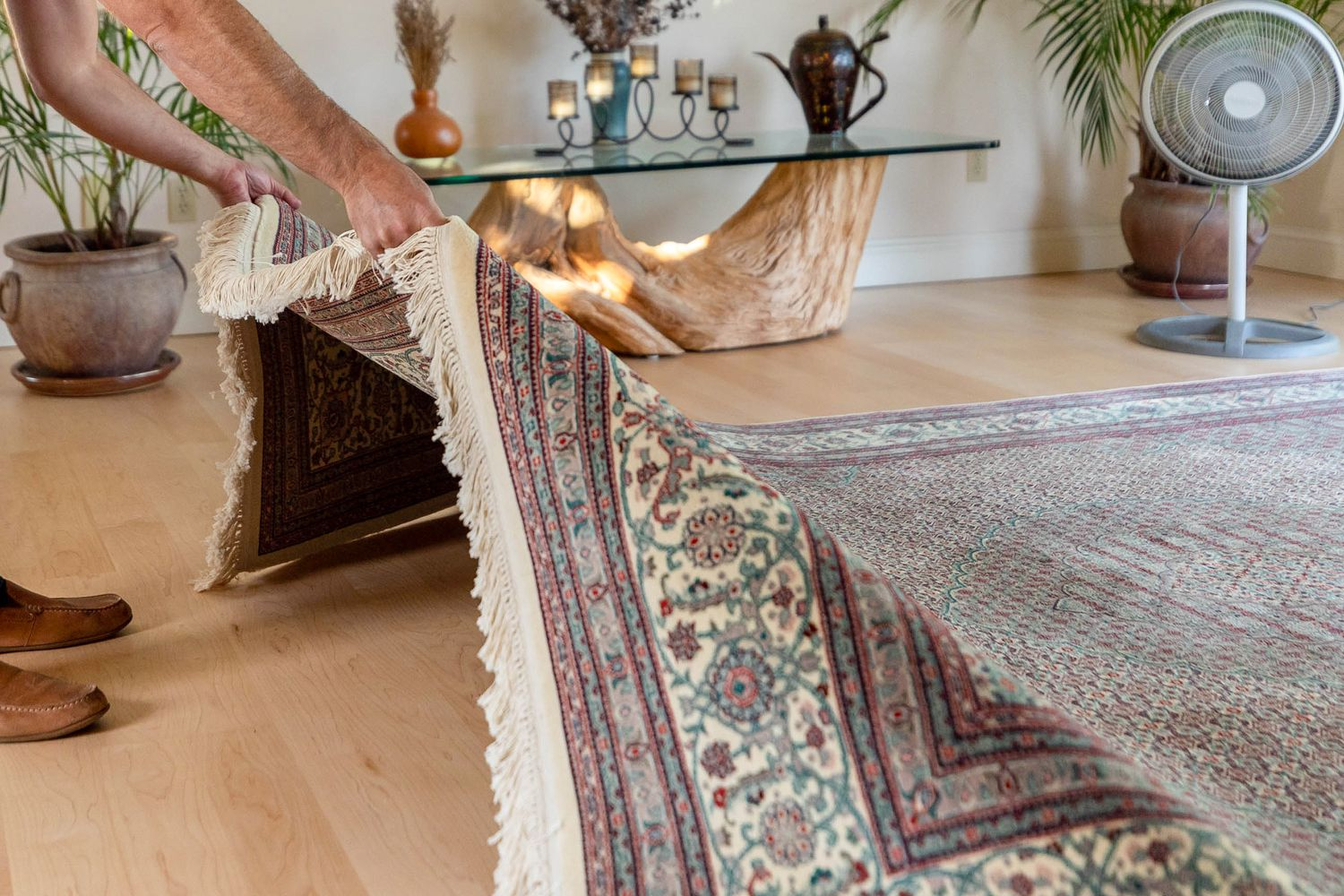
Shaking them outside is an effective way to get rid of dust and dirt for small rugs. To do this, remove the carpet and give it a good shake to remove dirt or debris. You can also use a stick to beat the carpet gently.
However, I would like to point out that some regions prohibit shaking rugs outdoors due to environmental concerns. So, check if there are any local laws or regulations before shaking your rug outside.
How to remove stains from your floor rug
Floor rugs are prone to stains, but quick action can help to remove them effectively. It's important to remember that time is of the essence when cleaning a stained rug. Please always remember to blot quickly, never rub the stain, and ensure any moisture from the spillage is removed.
Here are some effective methods for removing stains from your floor rug.
1. Removing alcohol and soft drink stains
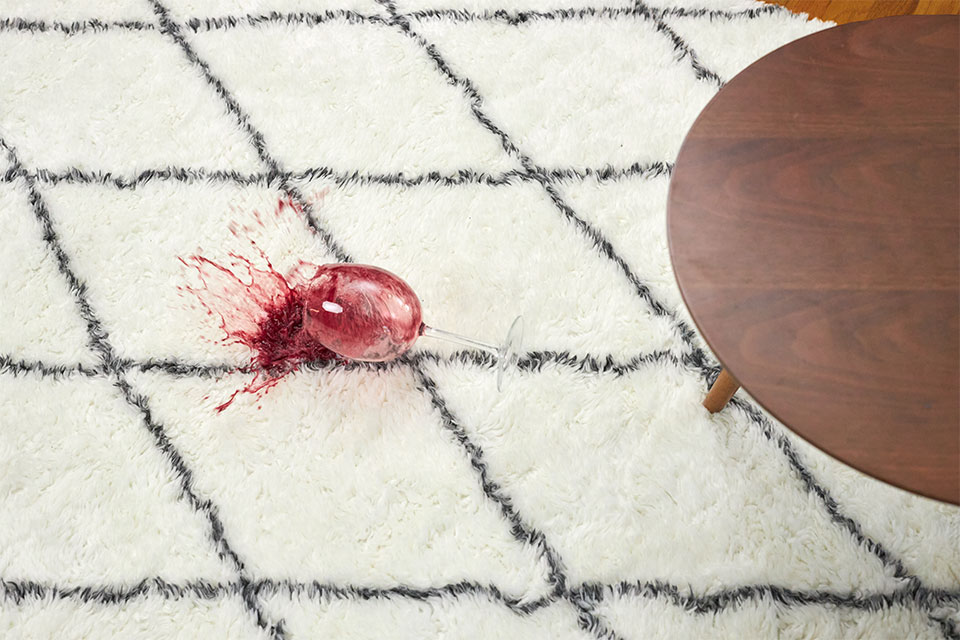
If you have a rug stain caused by alcohol or soft drinks, use a quart of warm water, a teaspoon of liquid dish detergent, and a fourth of a teaspoon of white vinegar. Apply this cleaning solution to the affected area and rinse it out. The discoloration should disappear after you blot dry.
2. Removing coffee or tea stains
Apply the same mixture of warm water, dish soap, and white vinegar to the affected area for coffee or tea stains. Blot and rinse it out. You can use a commercial spot cleaner if the stain disappears. If the stain still doesn't come off, you may need to call specialists.
3. Removing fat-based stains
Use any dry-solvent spot cleaner to remove fat-based stains, such as margarine, butter, or gravy. Follow the instructions on the cleaner, and blot the area until the stain disappears.
4. Removing paint stains

If you spill paint on your rug, act quickly while the stain is wet. Use the detergent to spot-clean latex and acrylic paintings. If the stain doesn't go away, swab the area with alcohol. Use odorless mineral spirits to sponge the stained area when using oil-based paints. Be careful not to soak through the backing.
5. Remove tomato sauce paints
If you have a tomato sauce stain on your rug, use a sponge and cool water to remove the stain. You can then choose between using a citrus-oxygen cleaner or a detergent solution. Rinse the area with 2 cups of water and 1 cup of white vinegar, then blot the surface until the fibers are dehydrated.
6. Removing urine, vomit, and feces (pet stains)
If you have a rug stain caused by urine, vomit, or feces, apply a detergent solution or a citrus-oxygen cleanser to the affected area. Rinse and blot the area until it dries completely.
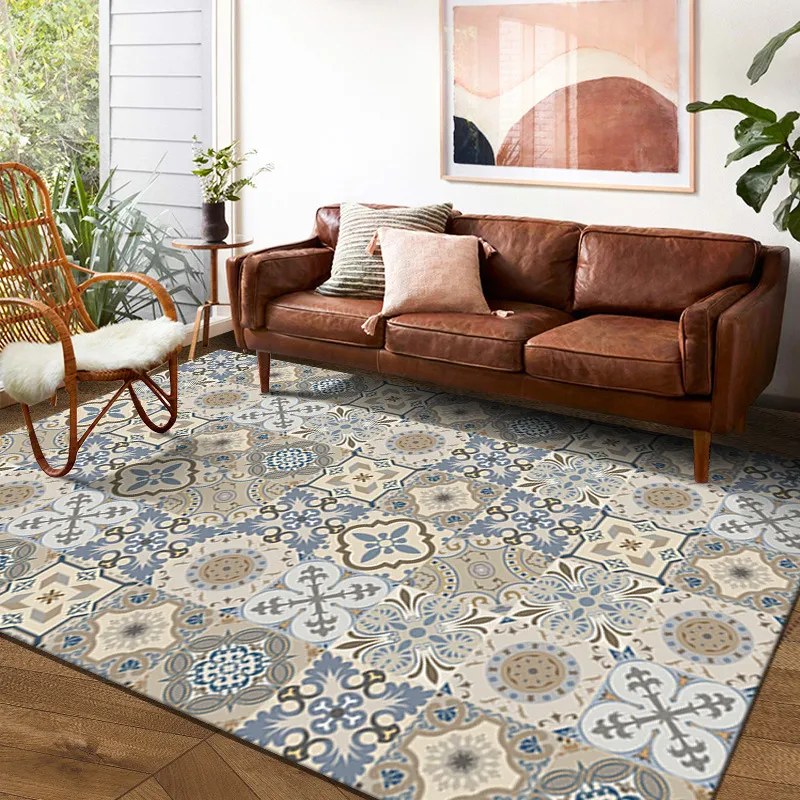
Give Your Area Rug Some Tender Loving Care Now!
Cleaning a floor rug can be a manageable task, especially for busy people. With these quick and easy methods, you can effectively clean and remove stains from your floor rug.
It's important to remember to act quickly, blot the area, and never rub the stain to prevent any permanent damage. Using household items like warm water, dish soap, and white vinegar, you can create an effective cleaning solution that can work wonders on your rug.
However, for more stubborn stains or if you need help with how to proceed, it's always best to seek the help of professionals.
A clean, fresh rug looks great and contributes to a healthy living environment. So, take some time out of your busy schedule to give your floor rug some TLC and enjoy the many benefits of a clean and beautiful home.
Also, you no longer have to struggle with cleaning your living room. Our ultimate guide on how to clean your living room provides all the knowledge you need to achieve a clean and organized space.
FAQs
How often should I clean a rug?
Regarding rug cleaning, the frequency depends on a few factors. For general maintenance, it's recommended to vacuum rugs twice a week to prevent dust and dirt buildup. Any spills should be taken care of immediately to avoid stains.
However, giving your rug extra care and attention twice a year for a more thorough cleaning is best. Spring and fall are ideal times for this. It's important to note that the frequency of deep cleaning may vary depending on where the rug is located.
For instance, you should deep clean rugs in low-traffic areas twice a year, while those in high-traffic areas, exposed to outdoor shoes, spills, and pets, should be cleaned every two months.
Why should I clean a rug if it looks clean?
Even if your rug looks clean, it may be harboring bugs and bacteria that are invisible to the naked eye. That's why it's crucial to clean it frequently. Small and often cleaning is recommended for all carpets to maintain your rug's cleanliness and free it from dust.
It's important to note that vacuuming alone won't remove carpet dust mites, which can cause allergic reactions such as asthma and eczema. So, taking extra steps to ensure your rug is free of these potential allergens is essential.
Furthermore, it's safe to assume that if your rug needs to be cleaned regularly, there may be more than just bugs hiding in it. Dirt, dust, and other debris can accumulate over time, making it challenging to keep your rug clean and fresh. Cleaning your carpet frequently ensures it's free of harmful bacteria and allergens and extends its lifespan.
Could I ruin my area rugs by washing them at home?
Washing an entire rug at home is risky and could damage the carpet. It's essential always to read the care instructions, whether on a tag that's still attached or the manufacturer's website, to ensure safe washing. Additionally, consulting with an expert can guide proper cleaning techniques.
It may be more cost-effective to clean thin, inexpensive rugs yourself rather than hiring a professional. However, it's essential to proceed cautiously and be mindful of the potential risks when washing thicker or more expensive rugs.
When attempting to wash a rug at home, it's crucial to learn as much as possible about its material and the maintenance type required. This is especially important for more extensive, thicker, or heirloom-quality rugs that may be more susceptible to damage.
Testing a small area before washing the entire rug, regardless of its material, is essential. For example, low-pile wool rugs, particularly those with multiple colors, may bleed their colors when washed at home. While some rug owners may not mind this, it's a personal preference.
Synthetic rugs don't typically have dyes that bleed, but they may still be at risk of buckling or developing mold due to using natural fibers in other parts of the rug. Proper drying techniques can help reduce the risk of bleeding and fungal growth.
Ultimately, it's essential to exercise caution and carefully follow the manufacturer's instructions to avoid damaging the rug during cleaning.
